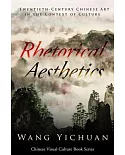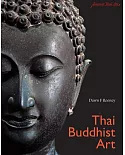Between 1802, when the young Kentucky artist William Edward West began to paint portraits while on a downriver journey, and 1920, when the last of Frank Duveneck's students worked in
Louisville, a large number of notable portrait artists were active in Kentucky and the Ohio River Valley. In Lessons in Likeness: Portrait Painters in Kentucky and the Ohio River Valley,
1802-1920, Estill Curtis Pennington charts the course of those artists as they painted a variety of sitters drawn from both urban and rural society. The work is illustrated, when possible, from
The Filson Historical Society collection of some four hundred portraits representing one of the most extensive holdings available for study in the region.
Portraiture involves artists and subjects, known as sitters, and is an art that combines elements of biography, aesthetics, and cultural history.
Private portraits often attract an oral history that enlivens the more colorful aspects of local tradition and culture. Public portraits of towering figures such as George Washington, Henry
Clay, and Abraham Lincoln were often reproduced in printed format to satisfy popular demand and subsequently attained an iconic, timeless status.
Lessons in Likeness is organized in two parts. Part One, the cultural chronology, serves as a backdrop to the biographies of the portrait artists. This section identifies stylistic sources and
significant historical moments that influenced the artists and their milieus. Rather than working in isolation, portrait artists were connected to the world around them and influenced by
prevailing trends in their trade. Early in the nineteenth century, for instance, Matthew Jouett journeyed to Boston for study with Gilbert Stuart, and upon his return to Kentucky painted in a
style that subsequently influenced an entire generation. Later artists, notably Oliver Frazer and William Edward West, studied the lessons of Thomas Sully in Philadelphia. Sully popularized the
lush, warmly colored, and highly flattering style of portraiture practiced by many of the itinerant artists whose careers were facilitated by the introduction of steam and rail travel.
The Civil War provoked a dramatic shift in the cultural terrain, further augmented by the rise of photography and the emergence of academic art centers. Painters who had previously worked with
a master painter, or learned on their own, were now able to study at established schools, especially in Cincinnati, which became one of the leading centers for the teaching of art in late
nineteenth-century America. Several of the teachers there, Frank Duveneck and Thomas Satterwhite Noble in particular, had firsthand experience with avant-garde European styles, notably the
realism and naturalism practiced in Munich and Paris in the last quarter of the nineteenth century and then taught in the art schools of New York and Philadelphia.
Part Two profiles the artists from this area and period who have appeared in previous art historical literature and have an identifiable body of work represented in public and private
collections. Individual biographies provide details of the artists' lives, sources for further study, and locations of works in public collections.





















